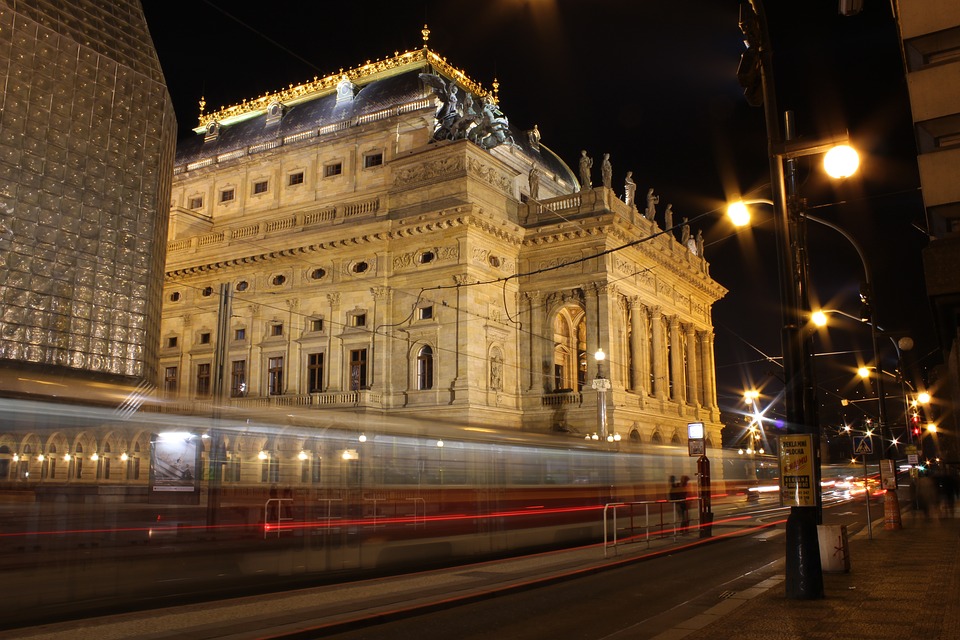Old Theatres with the Blanket of Modernity

Prague is a treasury of theatres as well offers a splendid atmosphere that is enough to attract anybody. To experience magical and lively shows, get ready to visit Prague as well list out one of a favourite theatre of your choice.
The National Theatre: The idea of constructing the National Theatre was suggested in the autumn of 1844 at the reunions of patriots in Prague. This provision was purposely acclaimed by the members so that the building could be epitomised as “the embodiment of the will of the Czech nation for its national identity and independence”. In the era of Bach’s absolutism, the construction of the building was halted for sometime by recommending a new proposal of a modest provisional building. However, the foundation stones were sited at a ceremony on 16 May 1868. The theatre was opened on 11 June 1881, but the building burnt down during construction. Hence, it was reopened on 18 November 1883.
At present, the National Theatre is a symbol of national identity. It is a famous Czech national cultural heritage as well a living example of excellent architecture. The building is an arena for polishing artistic creativity and dramatic skill. The theatre is a well-known place for the three artistic ensembles such as opera, drama, and ballet. It is not kept open for the public except on the day of performances.
The National Theatre is also known as the Narodni Divadlo. Anybody can reach the theatre in hardly 20 minutes from the centre (Old Town Hall) by a foot walk.
The Theatre of the Estates: The theatre was designed by Anton Haffenecker and constructed within less than a period of two years for the aristocrat František Antonín Count Nostitz Rieneck. Since 1724-1735, the Theatre of the Estates, also known as the Estates Theatre was the first private aristocratic venture in Prague. It was built in the neo-classical style as well opened in 1783 with a staged performance of the tragedy Emilia Galotti written by the German playwright Gotthold Lessing. The building had to face historical evidence particularly in regard to its naming which was finally decided as the Estates Theatre in 1991. It was built with the main aim of hosting German dramas and Italian operas.
The theatre offers several performances of dramas, ballets and operas these days and focuses on the work of Wolfgang Amadeus Mozart. It doesn't stay open to common people with an exception on the stage performance days.
The Estates Theatre is also known as the Stavovské Divadlo. It takes around 5 minutes walk from the centre (Old Town Hall) to reach the theatre.
The Prague State Opera: Its history recalled to the 19th century when the theatre was popularly known as the New German Theatre. In 1883, the Deutscher Theatreverein came up with an idea of raising the funds for building the theatre. This plan to construct the theatre was proposed by famous Viennese firm Fellner & Helmer along with Karl Hasenauer. It was planned to architect by Burgtheater in Vienna. The theatre was designed by Alfons Wertmüller as well constructed within 20 months. With the elaborated neo-rococo décor and spacious auditorium, the New German Theatre acclaimed the title of most beautiful architecture in Europe during those days. On 5 January 1888, the theatre hosted Richard Wagner's opera Die Meistersinger von Nürnberg performances. From 1949 to 1989, the theatre was named as the Smetana Theatre. After the Velvet Revolution in November 1989, it was renamed as the Prague State Opera.
Being the symbol of Prague, the Prague State Opera occupies a splendid neo-classical building. It is a perfect example of rich auditorium and marvellous decorations. It stages opera, ballet and other performances.
The Prague State Opera is also known as the Statni Opera Praha. It is situated at a walking distance of about 25 minutes from the centre (Old Town Hall).
Leave a Reply